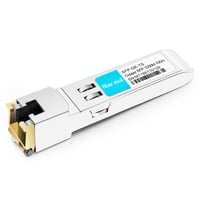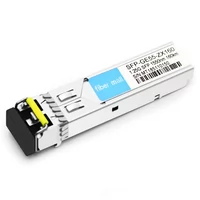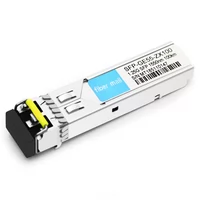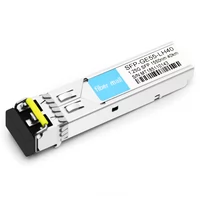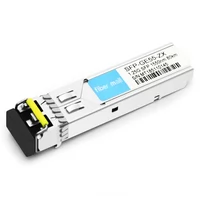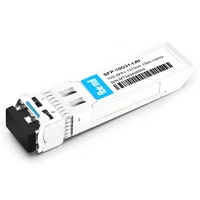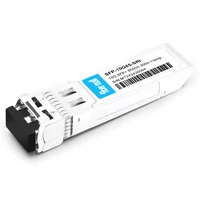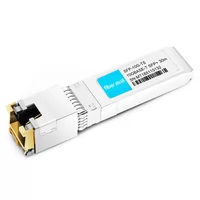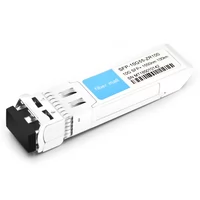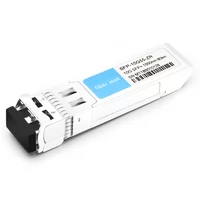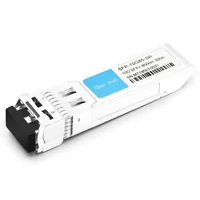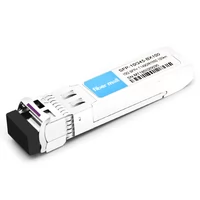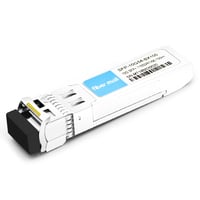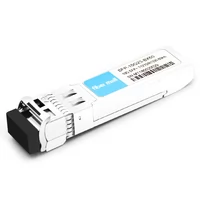With the increasing demand for data transmission rate, the development of switches has gone through 100M, Gigabit, 10G and now 25G, 100G, 200G, and even 400G switches, but Gigabit switches and 10G switches also play an important role in Ethernet cabling, FiberMall will tell you the difference between these two switches to help you make a better choice.
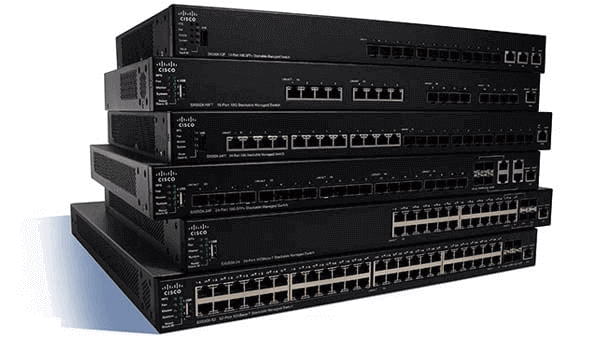
Table of Contents
ToggleWhat is 10 Gigabit and Gigabit Ethernet Switch
A switch is a network device that facilitates the forwarding of electrical or optical signals between modules. Gigabit and 10 Gigabit Ethernet switches are named according to their respective speeds. A Gigabit Ethernet switch is a type of switch whose ports can support speeds of 1000 Mbps or 10/100 Mbps. A 10 Gigabit Ethernet switch is a type of switch whose ports can support speeds of 10G or 100G.
A Gigabit Ethernet switch is a type of switch whose ports can support speeds of 1000 Mbps or 10/100/1000 Mbps. Gigabit Ethernet switches are known for their flexible networking capabilities, as they can provide full Gigabit access and enhanced 10 Gigabit uplink port expansion capabilities. In addition, they can achieve high-performance stacking within and across racks, as well as over long distances across regions, helping data centers and enterprises quickly build scalable and manageable data center network platforms.
A 10 Gigabit Ethernet switch is designed to meet the requirements of high performance and reliability and is a new generation of intelligent routing and switching devices primarily aimed at enterprise networks and service provider network aggregation or access layers. It can help users build optimized networks that are cost-effective and highly reliable. A 10 Gigabit Ethernet switch is not just a Gigabit Ethernet switch that supports 10 Gigabit optical modules; it has made significant changes in switch architecture, Layer 2 and Layer 3 technology updates, and effective bandwidth management.
In addition, the emergence of 10 Gigabit Ethernet switches has to some extent promoted the development of coaxial cables, twisted pair cables, and optical fibers, as well as the progress of network functions from shared Ethernet to full-duplex and switched Ethernet, and the transmission rate has been improved from 1000Mbps to 10Gbps and even 100Gbps, greatly meeting the needs of various applications for users.
The Differences Between 10 Gigabit Ethernet Switches and Gigabit Switches
- Transmission rates: The maximum supported speed of a 1 Gigabit Ethernet switch is 1000Mbps, while that of a 10 Gigabit Ethernet switch is 100Gbps. Therefore, the transmission rate of a 10 Gigabit Ethernet switch is faster than that of a 1 Gigabit Ethernet switch.
- Power consumption: The power consumption of a 10 Gigabit Ethernet switch is higher than that of a 1 Gigabit Ethernet switch, so in terms of energy efficiency, the 1 Gigabit Ethernet switch will be more outstanding.
- Functions: A 1 Gigabit Ethernet switch generally has two layers, while a 10 Gigabit Ethernet switch generally has two or three layers. Therefore, a 10 Gigabit Ethernet switch organically integrates the simplicity and flexibility of the second layer with the stability, scalability, and high performance of the third layer. As an upgraded version of the 1 Gigabit Ethernet switch, the 10 Gigabit Ethernet switch has more complete functions than the 1 Gigabit Ethernet switch.
- Backplane bandwidth and packet forwarding rate: The backplane bandwidth and packet forwarding rate of a 10 Gigabit Ethernet switch are higher than those of a 1 Gigabit Ethernet switch, so it is more capable of large-scale networking requirements. 10 Gigabit Ethernet switches are generally used at the core layer.
Application Scenarios
10 Gigabit Switches
① Large-scale internet cafes or cybercafes require higher data forwarding capabilities to alleviate the bottleneck problems of 1 Gigabit networks. For medium-to-large-sized internet cafes or popular cybercafes, 10 Gigabit switches are essential equipment that can prevent issues such as slow system boot and game start-up.
② Medium-to-large enterprises’ studios or offices have a large number of employees and computers, requiring a larger network bandwidth. In addition, some companies have very high-security requirements, and 10 Gigabit switches are relatively more complete and powerful in terms of security performance and features compared to 1 Gigabit switches.
③ Large-scale wireless coverage such as medium-to-large wireless monitoring and network monitoring requires a large number of wireless APs or requires extensive switch cascading, and 10 Gigabit switches must be used in the core layer.
1 Gigabit Switches
① Campus networks, computer rooms, small internet cafes or cybercafes, and other LANs have higher cost-effectiveness in small network layouts with 1 Gigabit switches.
② 1 Gigabit switches can be applied to the access layer of LANs and networks, while 10 Gigabit switches are only partially applicable to the access layer.
③ Small businesses with a large amount of internet access, extensive multimedia applications, regular file transfers, and other operations require strong data processing capabilities and efficiency from their networks, which can be easily achieved using 1 Gigabit switches.
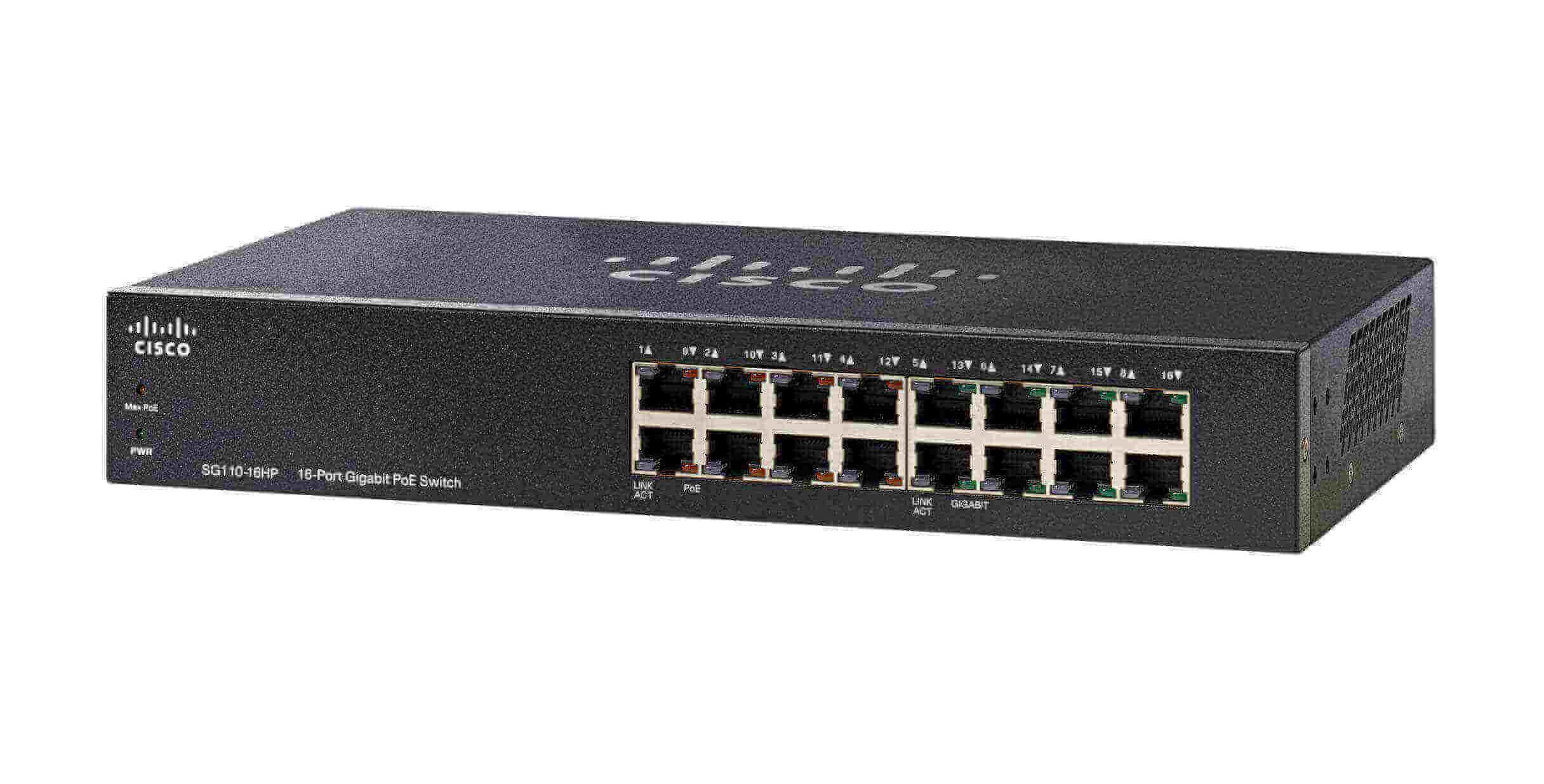
How to Test Gigabit Switches and 10 Gigabit Switches?
Testing Gigabit switches and 10 Gigabit switches require a comprehensive evaluation, not just from a single perspective. Now we will discuss the key points of testing Gigabit switches and 10 Gigabit switches in terms of throughput, transmission delay, protocols and features, and redundancy.
Firstly, it is important to test whether gigabit switches and 10 Gigabit switches can achieve the specified forwarding throughput and power consumption, particularly for 10 Gigabit switches where transmission delay time should also be observed. High-quality gigabit switches and 10 Gigabit switches should be able to forward data packets without obstruction when critical applications are loaded. For 10 Gigabit switches, efforts should be made to minimize transmission delay time.
Secondly, critical protocols and features should be tested, such as attack prevention features and traffic management features. Additionally, testing redundancy is also crucial, which includes both hardware system redundancy and software feature redundancy.
What is a 40G/100G 10 Gigabit Ethernet Switch?
The 40G/100G 10 Gigabit Ethernet switch is a Layer 3 10 Gigabit multi-protocol fixed configuration Ethernet switching product designed for high-performance, high-reliability requirements. It is a new generation of intelligent routing and switching equipment mainly aimed at enterprise networks, operator network cores, aggregation or access layers, and is suitable for demanding workloads.
What is the Role of a 40G/100G 10 Gigabit Ethernet Switch?
- The 40G/100G 10 Gigabit Ethernet switch can help users build a cost-effective and highly reliable optimized network, effectively protecting users’ existing equipment investments.
- The 40G/100G 10 Gigabit Ethernet switch can provide customers with rich business features and routing functions as well as hardware-based security features.
- The 40G/100G 10 Gigabit Ethernet switch has flexible network management capabilities and supports a variety of management interfaces for easy device management.
- The 40G/100G 10 Gigabit Ethernet switch has strong stability and high energy efficiency, meeting the requirements of operator/enterprise Ethernet applications.
- The 40G/100G 10 Gigabit Ethernet switch is equipped with complete system software, with comprehensive protocol and application functions, providing fast service deployment and management for traditional L2/L3 networks.
How to Choose 40G/100G 10 Gigabit Switches?
To meet the needs of various application scenarios such as next-generation enterprise networks, data centers, and metropolitan area networks, switch port rates have evolved from 100Mbps to 100Gbps or even 400Gbps. Although 10G Ethernet has been the most economical and high-performance interconnection method in data centers in recent years, with the explosive growth of cloud computing and the Internet of Things, data centers’ bandwidth requirements need to continue to grow to meet the massive data flow demands of the current and future cloud.
The 40G/100G 10 Gigabit Ethernet switch is mostly used in backbone core layers and aggregation layers. Its performance directly affects the performance of the entire network, so the following points should be noted when choosing a switch:
- Backplane bandwidth and packet forwarding rate. The 40G/100G 10 Gigabit Ethernet switch requires strong stability, easy-to-network compatibility, high-performance universal backbone data losslessness, and broadband expansion capabilities for unblocked high-speed forwarding performance. The higher the bandwidth and high-speed forwarding indicators, the stronger the performance of the switch, which can generally be seen directly in the parameters of the switch.
- Switching structure. There are two types of switching systems for current 40G/100G 10 Gigabit Ethernet switches: centralized switching and distributed switching. Centralized switching has a lower cost but lacks strong performance, while distributed switching has guaranteed performance but is more expensive.
- Scalability. In the transformation and upgrading of the network, requirements for the scalability of core switching equipment are inevitably raised. Can it be compatible with various manufacturers and brands of network products that have been accessed? Can it keep up with the current trend of network equipment and continuously adapt to network development, achieving smooth upgrades? This is a question that companies must consider when making basic cost investments.
- High performance. This can be seen from the power design, redundancy design, and port design of the switch. Is the power design capable of hot-swappable high-efficiency ratios, achieving lower total ownership costs for redundancy, cooling, and airflow selection of hot and cold channels? In terms of port design, can it provide faster and more efficient broadband processing capabilities to fully meet the needs of rapid data transmission in network machine rooms?
- High reliability.Whether the ports of the 40G/100G 10 Gigabit Ethernet switch use highly integrated circuit design, whether it can effectively reduce signal crosstalk and improve network security performance. If there are attacking viruses or hacker attacks, the ability of the core switch to resist them is very important. A good 10 Gigabit Ethernet switch device can help users prevent and reject viruses and malicious attacks launched by some hackers.
Recommend reading:
Understanding the Conversion: How many Mbps are in a Gbps?
What Does a 10G Network Mean in 2024?
Discover the Power of a Gigabit Ethernet Switch for Your Network
Understanding the Best Network Switch Speeds: A Comprehensive Guide
Related Products:
-
 SFP-GE-TS 1000M Copper SFP 100m RJ45 Transceiver Module
$12.00
SFP-GE-TS 1000M Copper SFP 100m RJ45 Transceiver Module
$12.00
-
 SFP-GE55-ZX160 1000Base SFP ZX160 1550nm 160km LC SMF DDM Transceiver Module
$85.00
SFP-GE55-ZX160 1000Base SFP ZX160 1550nm 160km LC SMF DDM Transceiver Module
$85.00
-
 SFP-GE55-ZX100 1000Base SFP ZX100 1550nm 100km LC SMF DDM Transceiver Module
$35.00
SFP-GE55-ZX100 1000Base SFP ZX100 1550nm 100km LC SMF DDM Transceiver Module
$35.00
-
 SFP-GE55-LH40 1000Base LH40 SFP 1550nm 40km LC SMF DDM Transceiver Module
$18.00
SFP-GE55-LH40 1000Base LH40 SFP 1550nm 40km LC SMF DDM Transceiver Module
$18.00
-
 SFP-GE55-ZX 1000Base SFP ZX 1550nm 80km LC SMF DDM Transceiver Module
$18.00
SFP-GE55-ZX 1000Base SFP ZX 1550nm 80km LC SMF DDM Transceiver Module
$18.00
-
 SFP-10G31-LRI 10G SFP+ LR 1310nm 10km LC SMF DDM Industrial High Temperature Transceiver Module
$20.00
SFP-10G31-LRI 10G SFP+ LR 1310nm 10km LC SMF DDM Industrial High Temperature Transceiver Module
$20.00
-
 SFP-10G85-SRI 10G SFP+ SR 850nm 300m LC MMF DDM Industrial High Temperature Transceiver Module
$13.00
SFP-10G85-SRI 10G SFP+ SR 850nm 300m LC MMF DDM Industrial High Temperature Transceiver Module
$13.00
-
 SFP-10G-TS 10G Copper SFP+ 30m RJ45 Transceiver Module
$45.00
SFP-10G-TS 10G Copper SFP+ 30m RJ45 Transceiver Module
$45.00
-
 SFP-10G55-ZR100 10G SFP+ ZR 1550nm 100km LC SMF DDM Transceiver Module
$280.00
SFP-10G55-ZR100 10G SFP+ ZR 1550nm 100km LC SMF DDM Transceiver Module
$280.00
-
 SFP-10G55-ZR 10G SFP+ ZR 1550nm 80km LC SMF DDM Transceiver Module
$150.00
SFP-10G55-ZR 10G SFP+ ZR 1550nm 80km LC SMF DDM Transceiver Module
$150.00
-
 SFP-10G85-SR 10G SFP+ SR 850nm 300m LC MMF DDM Transceiver Module
$12.00
SFP-10G85-SR 10G SFP+ SR 850nm 300m LC MMF DDM Transceiver Module
$12.00
-
 SFP-10G45-BX100 10G BX SFP+ BIDI TX1490nm/RX1550nm 100km LC SMF DDM Transceiver Module
$650.00
SFP-10G45-BX100 10G BX SFP+ BIDI TX1490nm/RX1550nm 100km LC SMF DDM Transceiver Module
$650.00
-
 SFP-10G54-BX100 10G BX SFP+ BIDI TX1550nm/RX1490nm 100km LC SMF DDM Transceiver Module
$650.00
SFP-10G54-BX100 10G BX SFP+ BIDI TX1550nm/RX1490nm 100km LC SMF DDM Transceiver Module
$650.00
-
 SFP-10G23-BX60 10G BX SFP+ BIDI TX1270nm/RX1330nm 60km LC SMF DDM Transceiver Module
$75.00
SFP-10G23-BX60 10G BX SFP+ BIDI TX1270nm/RX1330nm 60km LC SMF DDM Transceiver Module
$75.00

